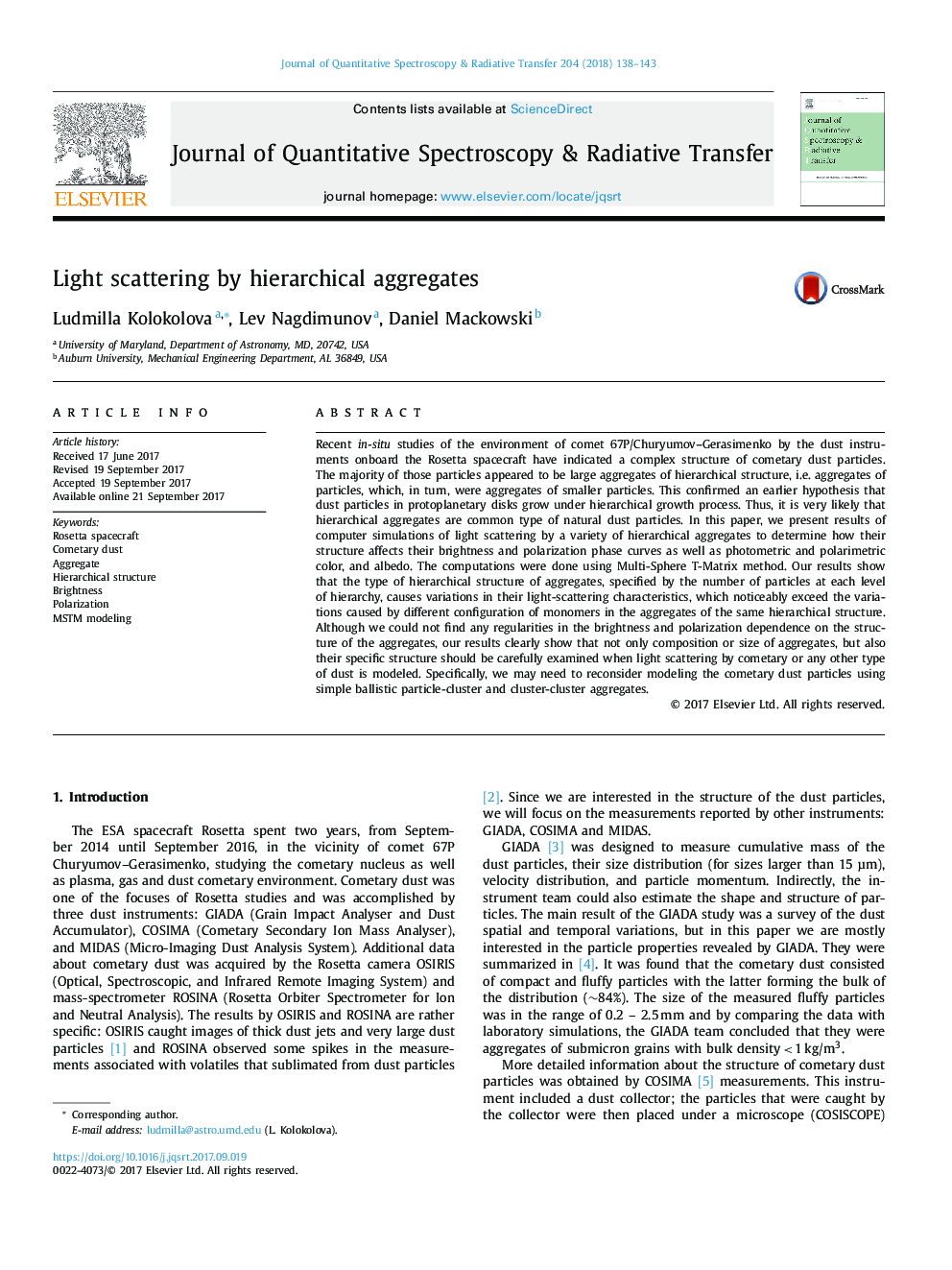| کد مقاله | کد نشریه | سال انتشار | مقاله انگلیسی | نسخه تمام متن |
|---|---|---|---|---|
| 5427005 | 1508611 | 2018 | 6 صفحه PDF | دانلود رایگان |
- Dust instruments onboard Rosetta spacecraft revealed hierarchical structure of cometary dust.
- We build hierarchical aggregates of different structure and study their light scattering using MSTM code.
- We found that the structure of the aggregates affects their photopolarimetric properties.
- Hierarchical structure of cometary dust particles need to be taken into account at studies of their light scattering.
Recent in-situ studies of the environment of comet 67P/Churyumov-Gerasimenko by the dust instruments onboard the Rosetta spacecraft have indicated a complex structure of cometary dust particles. The majority of those particles appeared to be large aggregates of hierarchical structure, i.e. aggregates of particles, which, in turn, were aggregates of smaller particles. This confirmed an earlier hypothesis that dust particles in protoplanetary disks grow under hierarchical growth process. Thus, it is very likely that hierarchical aggregates are common type of natural dust particles. In this paper, we present results of computer simulations of light scattering by a variety of hierarchical aggregates to determine how their structure affects their brightness and polarization phase curves as well as photometric and polarimetric color, and albedo. The computations were done using Multi-Sphere T-Matrix method. Our results show that the type of hierarchical structure of aggregates, specified by the number of particles at each level of hierarchy, causes variations in their light-scattering characteristics, which noticeably exceed the variations caused by different configuration of monomers in the aggregates of the same hierarchical structure. Although we could not find any regularities in the brightness and polarization dependence on the structure of the aggregates, our results clearly show that not only composition or size of aggregates, but also their specific structure should be carefully examined when light scattering by cometary or any other type of dust is modeled. Specifically, we may need to reconsider modeling the cometary dust particles using simple ballistic particle-cluster and cluster-cluster aggregates.
Journal: Journal of Quantitative Spectroscopy and Radiative Transfer - Volume 204, January 2018, Pages 138-143
